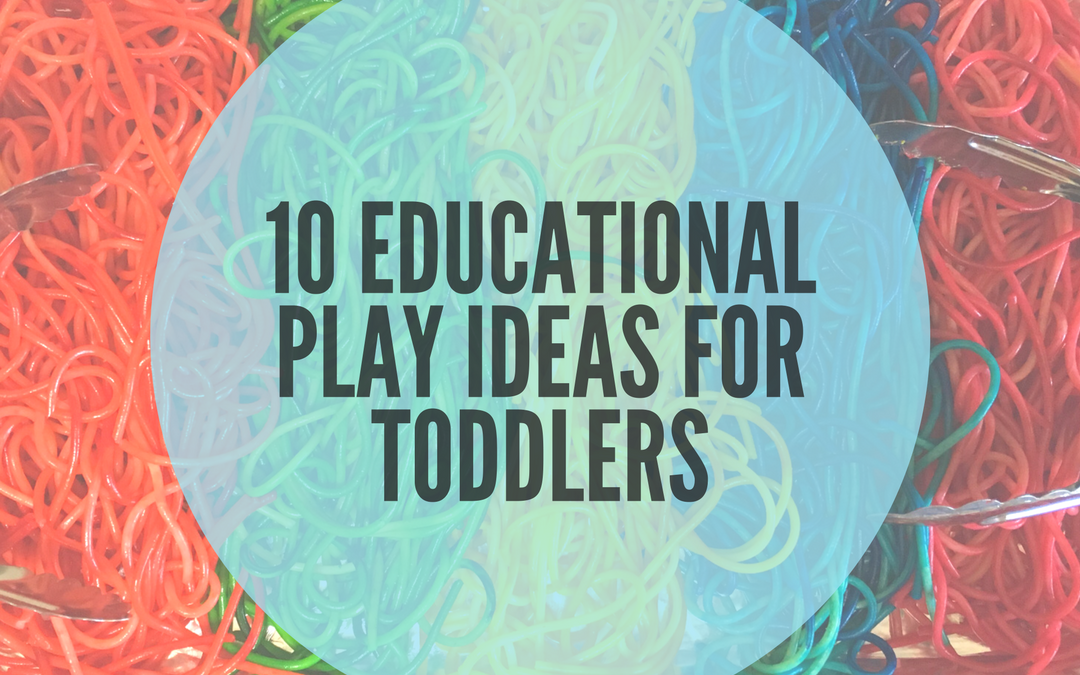Guest blog by Sandra Vanja Novak
The children want to learn more than they want to do anything else. They learn every waking minute, and we are teaching them all the time, we might not be aware that we are teaching them and what we are teaching them as certain actions come to us routinely and mechanically and we don’t even think about them. Children pay attention to everything, and they learn at lightning speeds.
Since they are like little sponges, feed their curiosity and zeal for learning. Do not push him/her, do not bore him/her and by all means stop before he/she wants to. Make sure all the activities teach them something, that learning is fun, short, and fast paced.
I’ve sorted different activities by the benefits each brings in a child’s life.
1. Make-believe
Make-believe is one of the children’s favorites. While they pretend to be a fireman, a driver, or a cook, they get to learn and have fun being ‘big’. Some suggestions include:
-used clothes make a wonderful dress-up selection
-food containers, cans and boxes can be used to set up shop, you can make paper money for the children to use, and use some clothes from a dress-up for the buyers
-boxes of different shapes make great sinks, doll furniture, refrigerator, table and chairs (release a creative genius and paint them different colors, decorate them etc.)
-by using a sheet, blanket or bead spread to put over a table so it hangs on ends to the floor, you get to create a hide out, a cave, or a house
-playing a mailman is fun by using envelopes, stamps, old Christmas cards, small wrapped boxes (wonderful way to teach the children how mail works, how letters are addressed and so on)
2. Vigorous play
Vigorous play is essential for development of small and large muscles and coordination. It is important to realize the need children have for getting the ‘wiggles’ out and to provide them with a chance for active play. They will be a lot more agreeable afterwards. Keep in mind that not all children (even of the same age) are able to do the same activities at the same skill level. Here are some ideas children enjoy the most:
-tumbling and rolling(make sure you provide a soft mat for the tumbling and rolling) you could teach them to make somersaults, naturally with your assistance at all times, they could pretend to be a ball, or roll sideways, forward and backward.
-running-create a challenge (distance to run with ready, steady, go, like professional athletes), the big storm is coming, run as fast as you can to outrun it (creative ideas are welcome)
-crawling through tunnels-the princess is captured in a castle and all the knights need to crawl through the tunnels to rescue her
-jumping over objects-there is a fast and dangerous hole, or a river that needs to be jumped over
-balancing-the king has given an order all the children that want to be safe from a dragon need to cross over the (tape on a floor) tightrope on the other side. For the children that would need a bigger challenge have them carry a bean bag on a head and a box in their hands across the ‘abyss’.
-obstacle course-combine several active play activities from above and create a story to go along.
3. Little ones in the kitchen and cooking
Children simply love to feel useful, they would rather help you ‘sweep’, ‘mop’, cut up bananas for a fruit salad than play with dolls and/or cars, but their ultimate favorite is ‘cooking’ and eating what they’ve made. Praise the child’s efforts generously, his/her sense of pride in helping with a “big” person’s jobs is more important. Let them help by:
-washing the lettuce and tear it up for dinner
-buttering dinner rolls
-cutting up bananas (with a blunt knife) for a fruit salad
-squeezing lemons or oranges for a lemonade
-you can create a picture recipe for a child to follow along or help you pass certain items, stir and mix
-measuring cups and spoons provide an excellent early learning tool for comparing measures, sizes and textures.
4. Outside action
Playing outside is essential for a child’s proper development, getting the ‘wiggles’ out and enough fresh air. Strive to have minimum 1-2 hours a day out in nature and fresh air, weather permitting. If it’s raining or cold outside bundle them up and take them out anyways (maybe even twice?)
-collect-children love to collect just about anything, so start a nature collection of rocks, leaves, seed pods, etc.
-make a simple bird feeder and watch a variety of birds visit it, take pictures of birds and make a bird watching board for the children to identify when they see
-playhouse-huge cardboard boxes make wonderful play houses (cut out doors, windows and paint it, ad cushions, curtains and stick children’s art work inside)
-balance beam-set a large wooden plank a few inches off the ground, crawling or walking on it will help the children to develop sense of balance (if you can bring it in, it is a great activity for rainy days)
-sandbox-no comment necessary
-climbing-if you have nothing else, an old wooden ladder would do the trick by sawing off a section and leaving only 3-4 rungs
5. Water play
I am not sure if there’s an activity that includes water play that children don’t simply adore. You can’t go wrong with any of the following (fill the jars with water and ad a few drops of food coloring):
-pouring from smaller to bigger jars
-floating (discover which objects float in water: cork, Styrofoam, balloons, nuts and bolts, marbles, crayons, soap, sticks…)
-sidewalk art with colored water, (don’t forget to take pictures, you might have the next Picasso in your care)
-bubble blowing
-washing and scrubbing-take some much needed toys, dolls, or surfaces for a wash and a scrub, add soap, and sponges/brushes for a more ‘real’ experience
-winter water play-put a small amount of water outside and check on it every hour or so
-scoop the snow and make castles small and large, igloo, and a fort
6. Dancing
Children love dancing, but need to be taught rhythm and beat. Play a song and have a child:
-determine if it is a walking or jumping music
-run in place to the rhythm
-use scarves or bells in the rhythm
-pretend to follow the music while ice skating or galloping
7. Cutting
Another all time favorite is cutting activity, besides being fun for children it is great for hand-eye coordination. Make sure you use dull end scissors and you assist the child with this activity.
-start with cutting strait lines
-next is a more demanding circle cutting
-use the shapes to create fun characters and objects (clown, stoplight, bunny, etc.)
8. Squeezing and pinching
The aim of these play activities is to develop small motor coordination and strength, especially of the fingers that will be used for writing later on.
-clothes pins-mark a spot on a clothes pin where the child should press, and place them around the edge of a bowl, then ask the child to release them and place them in a bowl (warning: little children can play this game for hours)
-give the child sponges to use to pick up spills (accidental or not) and squeeze them to get the water out
-playing with dough provides wonderful sensory and sqeezing, pinching activity
-button drop game-find an empty container with a plastic lid, cut out a small hole in the middle and fill the container with large buttons (make sure the child is closely watched when doing this activity so he/she doesn’t swallow the buttons) have the child put them through the hole in the top.
-use large plastic tweezers for picking up anything from sponge cut outs to noodles
9. Sensory boards
Young children take great pleasure in exploring their five senses. Even though to their eyes two items are obviously different, they enjoy being blindfolded as they use their other senses to explore them.
-gather few foods that look alike, let them look at it, and ask them to guess which one is which without tasting (flour, baking powder, salt, sugar)
-let the child sniff foods you are using in cooking
-pull out a few food items from the fridge with different smells (offer a taste)
-put different items in a bag (toothbrush, sponge, toy car, stone, crayon,…), let the child reach and try to guess what he/she feels before pulling it out.
-feeling opposites (wet sponge/dry sponge, rough/soft, bumpy/smooth)
10. Manners
These activities aim to help the child to develop self-confidence, independence, and cooperation. If a child bumps someone, he needs to be aware he has bumped into the person. It seems like something to obvious to us, but believe it or not, it is very helpful to have activities and exercises to teach a child to be more aware of his body and movements and to develop a control of them. Here are some activities:
-walking around the furniture without bumping into it
-walking around the rug without stepping on it
-carrying a chair
-opening and closing doors carefully
-hanging up coats
-etc.
Sandra Novak is from Croatia, where she lives with her husband and three of her five children whom she home schools. Sandra has worked 20+ years in Humanitarian Aid, whilst studying and gaining experience in Mommy and baby care, K-12 Education , Special Education, working with children in refugee camps, orphanages and low income families. Sandra has also published courses on Parenting and is currently working on more courses in this area. You can learn more about her at http://sandrasacademy.thinkific.com
Thank you for sharing your wealth of knowledge with the //celebrateplay// community.



